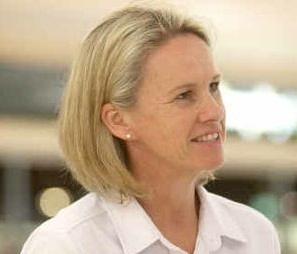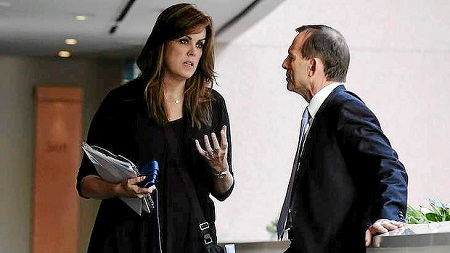 Fiona Nash is Deputy Leader of the Nationals in the Senate and Assistant Minister for Health. Back in mid-February there was a kerfuffle over taking down a food labelling site and the apparent conflict of interest of her then chief of staff, one Alastair Furnival.
Fiona Nash is Deputy Leader of the Nationals in the Senate and Assistant Minister for Health. Back in mid-February there was a kerfuffle over taking down a food labelling site and the apparent conflict of interest of her then chief of staff, one Alastair Furnival.
The basic story is this. Food labelling has been under review for years by the Australia and New Zealand Food Regulation Ministerial Council. According to The Guardian back in Labor’s time the ministerial council approved a five star labelling system indicating food nutrition.
The website included a calculator that provided a star rating based on the ingredients and nutrient content of a food item, taking into account energy, saturated fat, total sugar, sodium, fibre, protein and fruit and vegetable content.
It’s a voluntary system. The website, specifically approved by the council, was to provide guidance to manufacturers and distributors who could then, if they wished, include the rating on the labelling. Meanwhile the site would be available to the public.
The staff of the department of health duly set up the site. Within hours Nash demanded that it be taken down. The public servants refused, saying they were working for the ministerial council. Furnival then intervened with their bosses, heavied them and the site came down. This shouldn’t happen.
Much of the controversy then was over Furnival’s former and possibly current links with sections of the food industry hostile to the project, what Nash told the senate about this, how she had to then provide ‘further information’ which was pretty much the opposite.
One bottom line is that Laura Tingle reckons Nash definitely misled the senate. On that basis she should have resigned or been sacked.
A side issue relates to the vetting of Furnival’s appointment in the PM’s Department. Andrew Elder points out that Peta Credlin, Abbott’s supremo, knew personally all about Furnival before he was appointed.
BTW who do you reckon is in charge here?

Elder also points out how dunderheaded and useless your average gallery journalist is.
All these interesting aspects distract attention from what Nash was really up to. She claims the site was premature. She has initiated a cost-benefit analysis which she says needs to be completed first. Other ministers who are part of the Council say that this analysis is a Commonwealth initiative and as such has nothing to do with the Council.
The real agenda seems to be a delaying tactic. The vote in favour of the site was narrow and Nash is hoping to revisit the issue with the prospect of a different result after the elections in SA and Tasmania.
Mike Daube, Professor of Health Policy at Curtin University, speaking to Peter Lloyd, reckons that’s not all she’s done.
Look I think the major issue now is not about one staffer who is gone but about whether the Federal Minister responsible for prevention understands the importance of prevention and will take the action that’s needed.
You look at the three big prevention priorities – tobacco, alcohol, obesity – and they’re also the three big priorities or three of the biggest priorities if we want to close the Indigenous life expectancy gap, and this Minister so far does not have a good record.
She’s scuppered a food labelling system, she’s defunded the major peak national alcohol treatment organisation and her party still accepts tobacco funding. So I think it raises much bigger question marks about Senator Nash than it does about the Mr Furnival.
I couldn’t agree more.
Problem is, there could be a cost to Radio National in reporting inconvenient material like that. I’m expecting a major push to kill off RN coming out of the current reviews of the ABC. I suspect the LNP sees RN as an unseemly steaming cesspit of lefties.

 These posts are intended to share information and ideas about climate change and hence act as an open thread. Again I do not want to spend time in comments rehashing whether human activity causes climate change.
These posts are intended to share information and ideas about climate change and hence act as an open thread. Again I do not want to spend time in comments rehashing whether human activity causes climate change. These posts are intended to share information and ideas about climate change and hence act as an open thread. This post has emphasised science, observations and impacts. Comments, about science, observations impacts, and future predictions are welcome. I do not, however, want a rehash of whether human activity causes climate change.
These posts are intended to share information and ideas about climate change and hence act as an open thread. This post has emphasised science, observations and impacts. Comments, about science, observations impacts, and future predictions are welcome. I do not, however, want a rehash of whether human activity causes climate change.
 This week I’ve concentrated on the practical side of Climate change – mitigation and adaptation and the relevant policies.
This week I’ve concentrated on the practical side of Climate change – mitigation and adaptation and the relevant policies.





